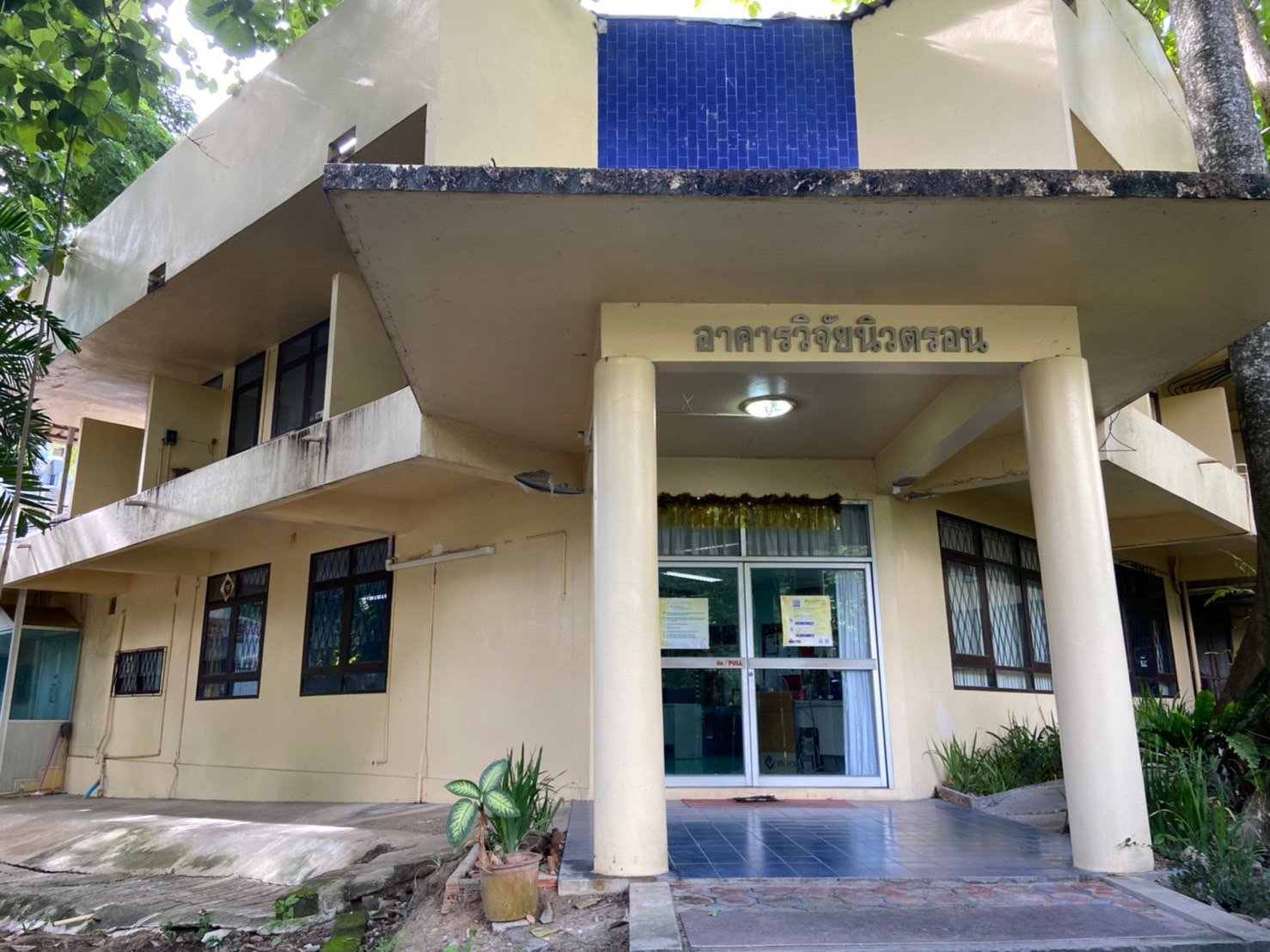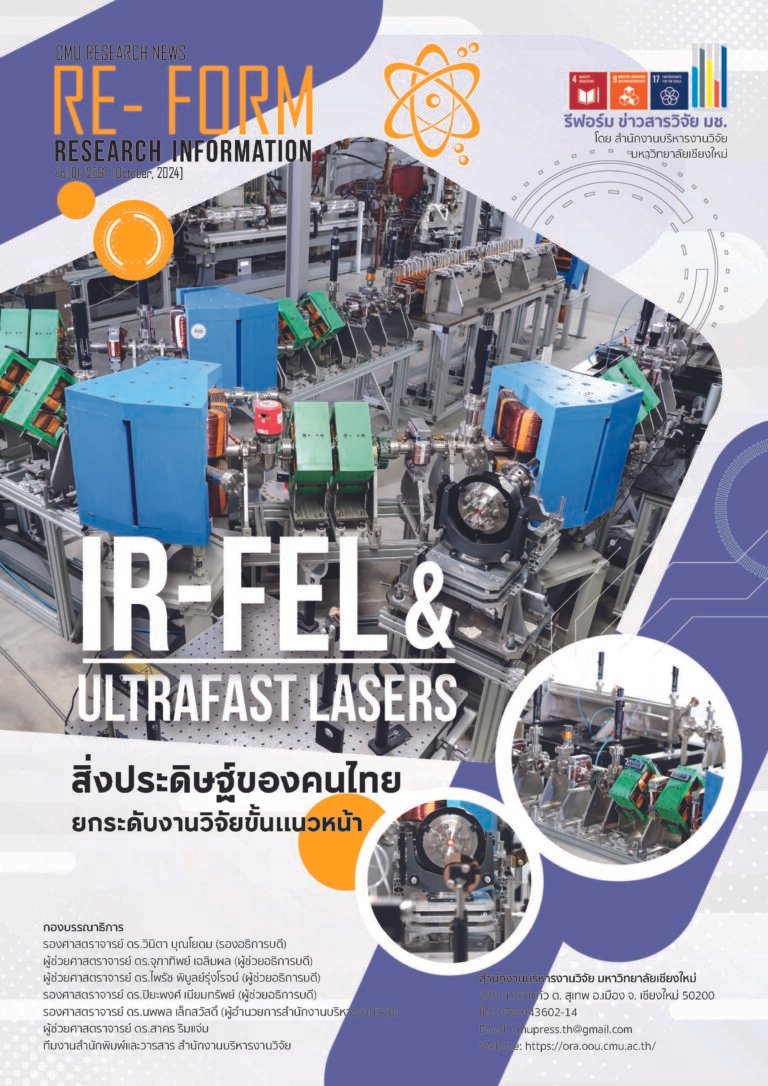Compiled by Associate Professor Dr. Somsorn Singkarat
To date, particle accelerators have been in existence for no less than 90 years. It is estimated that there are currently more than 17,000 particle accelerators worldwide. In this era, the most well-known accelerator is likely the one at CERN, the European Organization for Nuclear Research. In mid-2012, this accelerator was used to discover the Higgs boson particle, sometimes referred to as the "God particle." This discovery led to two theoretical physicists being awarded the Nobel Prize in Physics in 2013. In terms of applied benefits, particle accelerators have significantly contributed to global advancements in several fields. Most notably, they are crucial for the development of microelectronics technology, which is at the heart of the creation of smartphones and tablets that are widely popular today.
For Thai people, the term "particle accelerator" no longer sounds unusual. Nowadays, several particle accelerators in Thailand operate regularly almost every day. Examples include electron accelerators used for cancer treatment at major hospitals such as Siriraj Hospital or Maharaj Nakorn Chiang Mai Hospital. Additionally, there are small cyclotron accelerators used to produce positron-emitting substances for Positron Emission Tomography (PET) techniques at the National Cyclotron and PET Center, Chulabhorn Hospital, and the Center of Medical Excellence, Faculty of Medicine, Chiang Mai University. Other examples include the synchrotron accelerator of the Ministry of Science and Technology in Nakhon Ratchasima Province, the electron accelerator at the Thailand Institute of Nuclear Technology for gemstone quality improvement, and the ion implanter accelerator for microelectronics technology at the Thai Microelectronics Center (TMEC) in Chachoengsao Province.
But who would know that the Faculty of Science at Chiang Mai University is the pioneering institution that first introduced the use of particle accelerators in Thailand? This distinction has further led to the Faculty of Science at Chiang Mai University being the only institution in the country capable of constructing its own particle accelerators and having the largest number of operational particle accelerators. The origin of this story dates back to about 50 years ago.
Pioneer of Particle Accelerator Use in Thailand
After the first Department of Physics in the beautiful Lanna region of Thailand was established in 1964 (later renamed the Department of Physics and Materials Science in 2008), the first branch to begin concrete research was nuclear physics. This pioneering effort was led by a young, stylish doctor who had just returned from the University of California at Los Angeles (UCLA) in 1965. This young nuclear physicist is now known as Professor Dr. Prasit Charoenkwan. At that time, the Department of Physics had only six faculty members, including one British professor sent by the British government under the Colombo Plan. In 1970, using the department's annual budget of about $5,000, the nuclear physics branch acquired a crucial experimental device: a compact particle accelerator designed to produce high-energy 14 MeV neutrons, known as a Sealed Tube Neutron Generator. Though it might appear as a small device, not exceeding half a meter in length, this was indeed the “first particle accelerator in Thailand”. It required a high degree of confidence and faith to purchase such a tool for use in the first provincial university in the country, which had only been established six years prior.
At that time, the Department of Physics had only six faculty members, including one British professor sent by the British government under the Colombo Plan. In 1970, using the department's annual budget of about $5,000, the nuclear physics branch acquired a crucial experimental device: a compact particle accelerator designed to produce high-energy 14 MeV neutrons, known as a Sealed Tube Neutron Generator. Though it might appear as a small device, not exceeding half a meter in length, this was indeed the “first particle accelerator in Thailand”. It required a high degree of confidence and faith to purchase such a tool for use in the first provincial university in the country, which had only been established six years prior.
The strength of nuclear physics at Chiang Mai University continued to flourish under the leadership of Professor Dr. Prasit Charoenkwan, along with a team of faculty members, some of whom were among the first graduates. With substantial support from the National Research Council of Thailand (NRCT), which still provides support to this day, the reputation of this research team began to spread nationwide. The author recalls that while studying at the Department of Physics, Chulalongkorn University, even his professors acknowledged that Chiang Mai University had the most outstanding research in nuclear physics in the country. During that period, the Faculty of Science at Chiang Mai University excelled in teaching and researching delayed nuclear reactions induced by 14 MeV neutron radiation, both in fundamental and applied nuclear physics. This included the discovery of new isotopes and elemental analysis using Fast Neutron Activation Analysis (FNAA). One notable achievement was the discovery of the decay pattern of the radioactive isotope Cobalt-64 for the first time in 1977.
This strong foundation laid the groundwork for significant support from the International Atomic Energy Agency (IAEA) in the subsequent years, a relationship that has continued to this day.



